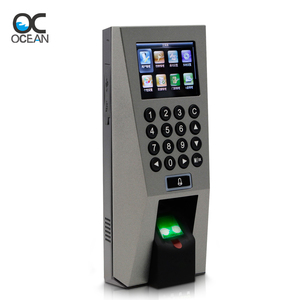Introduction to Biometric Time Clock Terminal
The biometric time clock terminal is a revolutionary advancement in employee attendance tracking, leveraging cutting-edge biometric technology to enhance security and accuracy in timekeeping. This device utilizes unique biological traits such as fingerprints, facial recognition, or iris scans to authenticate users, ensuring that only authorized personnel can check in and out. As businesses continue to seek efficient ways to manage workforce attendance, biometric time clock terminals have emerged as a reliable solution that not only streamlines the process but also helps eliminate time theft and buddy punching.
Types of Biometric Time Clock Terminals
When selecting a biometric time clock terminal, it’s important to know the various types available, each tailored to meet specific user needs:
- Fingerprint Scanners: Utilize the unique patterns on an individual's fingerprints. These are among the most common due to their speed and reliability.
- Facial Recognition Systems: Capture and recognize an individual’s facial features to grant access. Ideal for workplaces with high turnover or a fluctuating workforce.
- Iris Recognition Devices: Use the unique patterns within the human iris for identification. These offer a high level of security but are often more expensive.
- Hand Geometry Readers: Analyze the size and shape of an individual's hand. While less commonly used, they provide a reliable and non-intrusive option.
Functions and Features of Biometric Time Clock Terminals
The functionality and features of a biometric time clock terminal make it an ideal choice for modern businesses aiming to optimize their time management systems:
- Real-Time Attendance Monitoring: These systems provide real-time data on employee clock-ins and clock-outs, ensuring accurate payroll processing.
- Enhanced Security: By utilizing biometric identifiers, they significantly reduce the risks of unauthorized access and time fraud.
- User-Friendly Interfaces: Equipped with LCD screens and intuitive navigation, these terminals allow for easy access and operation by employees.
- Cloud Integration: Many biometric time clock terminals offer options for cloud connectivity, allowing for data backup and remote access.
- Reports and Analytics: Advanced models generate detailed reports on attendance patterns, helping management to make informed decisions.
Applications of Biometric Time Clock Terminals
The applications of a biometric time clock terminal span various industries, providing tailored solutions to enhance operational efficiency:
- Corporate Offices: Streamlining attendance for employees, ensuring accurate timekeeping for payroll processing.
- Manufacturing Facilities: Monitoring time and attendance of factory workers to optimize shift schedules and workforce productivity.
- Healthcare Institutions: Ensuring timely attendance of medical staff while maintaining strict security protocols.
- Educational Institutions: Tracking attendance for both faculty and students, thus enhancing administrative efficiency and reporting accuracy.
- Construction Sites: Managing on-site employee attendance to ensure compliance with labor regulations and enhance safety measures.























































































































































































































